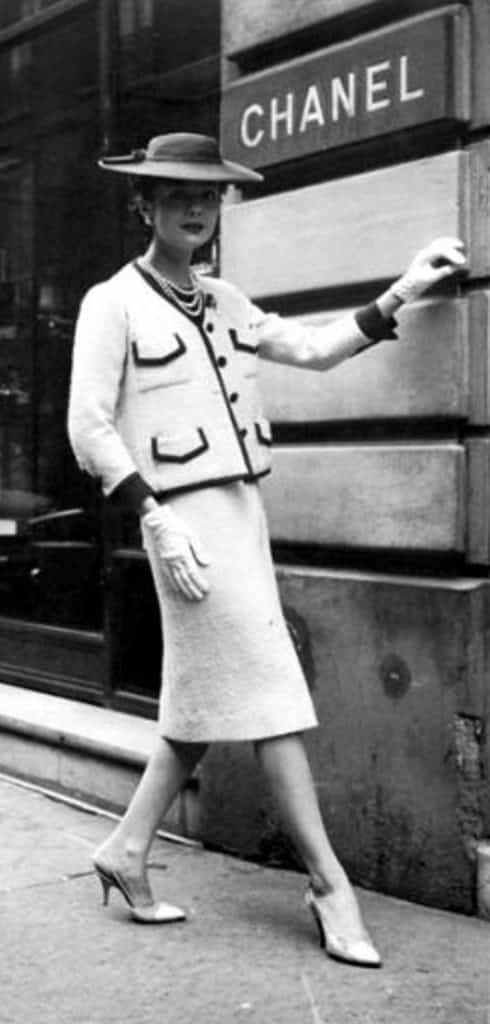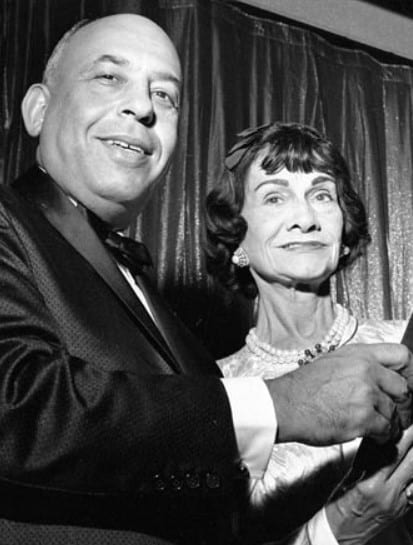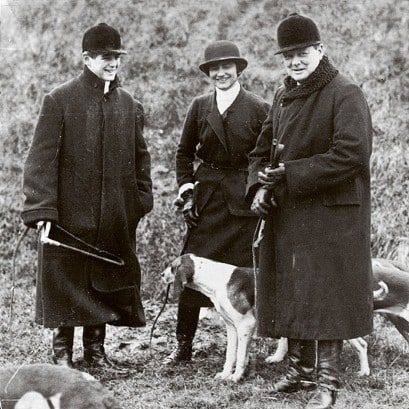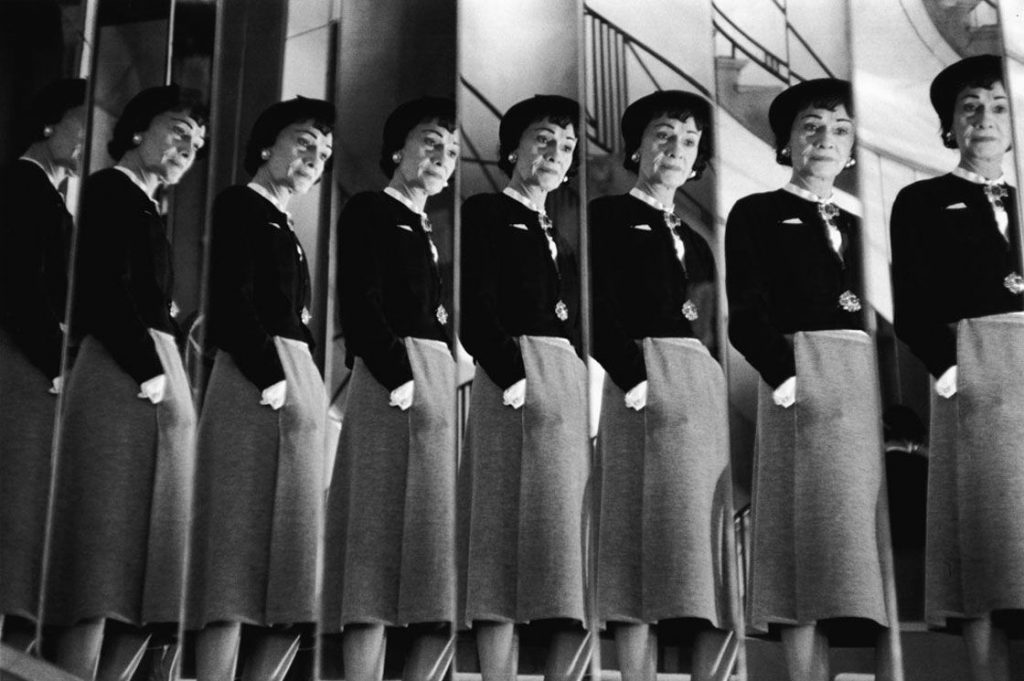Coco Chanel, widely considered to be one of the greatest designers in history, led secret double life as a spy for the Nazis in WWII.
As one of the most iconic women in fashion history, you’d imagine that most people would be familiar with the life of Coco Chanel by now.
However, one of the most shocking periods of the legendary designer’s lifetime has gone fairly under the radar over the years, with many of the brand’s fans unaware that the scandalous turn of events ever even took place – despite her secret being outed all the way back in 1944.
It’s a story that must be heard to be believed and perhaps the most astounding tale in the world of 20th-century fashion: Coco Chanel, widely considered to be one of the greatest designers in history, led secret double life as a spy for the Nazis in WWII.
How It Started
Chanel, overcoming her upbringing in relative poverty, had always been determined to climb the ranks of the social set and carve out a reputation for herself as a member of the French elite. So focused was she on keeping her humble beginnings under wraps from her upper-class friends that she failed to correct a spelling mistake on her birth certificate that saw her family name listed as Chasnel, should having this corrected draw attention to her birthplace within a charity poorhouse.
Chanel had made a career from being one of the world’s most glamorous, most fashionable and most sophisticated women – this wasn’t a position that you found yourself in without keeping certain things under wraps.
By the advent of WWII in 1939, Chanel had no shortage of friends in high places. Amongst her closest confidantes were British political heavyweights and aristocracy, having befriended Prime Minister Winston Churchill and having an affair with Hugh Richard Arthur Grosvenor, the Duke of Westminster.

Her relationship with the duke lasted some ten years and saw her gifted with homes, cars, jewels and fine art – Chanel had expensive taste and only paid interest in those able to cater for it.
Whilst the Duke was perhaps her most high-profile affair, Chanel had taken up with no shortage of influential men during her lifetime, with poets and artists amongst the list of lovers to have spent time with the designer. She had a penchant for living both excessively and dangerously – and was, like many, incredibly worried by the lack of control that the second world war appeared to be threatening French residents with.
As one of the country’s most famous women, however, she was in the position to use her social standing to her advantage.
Following the German occupation of France, Chanel had taken to residing at the Ritz in Paris. It was here that she would meet Baron Hans Gunther Von Dincklage, a member of German aristocracy and former military officer – and so began a liaison that saw Chanel working on behalf of history’s most notorious dictator.
Coco Chanel: Nazi Operative
While France as a country was allied with British forces during WWII, Chanel’s own views aligned far more with those of her country’s enemies.
A shockingly outspoken anti-semite, Chanel almost entirely subscribed to the ideas put forward by Adolf Hitler regarding people of the Jewish faith. Years of working with the French social elite saw Chanel’s own political ideology shifting in line with the opinions of her affluent friends, many of whom would openly share their disdain for Jewish people – she had simply nodded along, to begin with, but had grown to ferociously hold such views for herself.

So, upon being introduced to Baron Hans Gunther Von Dincklage, Chanel was immediately taken with him. Not only was Dincklage a member of German aristocracy and, like her former lover the Duke, continually giving Chanel expensive gifts and financially covering her stay at The Ritz, but he was also of prominent standing within the ranks of German military intelligence.
If there was a man that could guarantee the preservation of Chanel’s life and work in the face of the German occupation of France, it was him.
Adopting a dedicated position within the German military could undoubtedly work in Chanel’s favour. There were several ways that Chanel felt she could personally stand to benefit, first is dealing with the imprisonment of her nephew, who was, at the time, being detained in a German stalag. She was adamant that he be released.
Chanel’s business dealings stood to benefit from her work with the military, too. In 1924, she sought backing from the Jewish Wertheimer family, who had donated financial support for her to manufacture and distribute her successful perfume line.
The share of the profits between the two parties had, until then, worked in Wertheimer’s favour, but new German laws forcing Jewish citizens to surrender control of their own businesses would give Chanel the chance to reclaim her fragrance empire. It’s easy to see why Chanel felt that she had nothing to lose and all to gain.
In 1941, Coco Chanel made the decision that she would commit herself to the German cause for the duration of WWII.
A German Abwehr agent and friend of Chanel’s lover Dincklage allegedly promised Chanel that he would see that her nephew was promptly released in exchange for Chanel’s services for the German military. She needed no more convincing and was promptly registered as Agent F-7124 – her codename was ‘Westminster’, a strange tribute to her former lover.
Chanel’s first mission as a German agent was to extract political information from colleagues in Madrid, which she did after travelling to Spain for ‘business reasons. While there, she wined and dined with friends and colleagues, as well as British diplomat Brian Wallace with whom she casually discussed the animosity that the French held towards the Germans. He wasn’t to know that was now fully aligned with the latter.

Following this trip, her first request was granted, and her nephew was released from prison soon after. As the war continued, Chanel lived securely thanks to her position within the German military.
A prominent celebrity in the country, German intelligence was reluctant to use Chanel for too many missions in order to avoid speculation surrounding her involvement with enemy forces. However, when the tide appeared to be turning against Germany in 1943, it was time that Chanel put her connections with British Prime Minister Winston Churchill to good use.
Chanel arranged for the release of a second confidante that had been held in prison – this time, Vera Lombardi. A mutual friend of both Chanel and Churchill, it was thought that Lombardi may be useful in carrying out Chanel’s mission to relay to Churchill that SS forces were considering admitting defeat. However, they hadn’t accounted for the fact that Lombardi would not be so quick to co-operate.
Upon her release, Lombardi denounced Chanel and outed her involvement with the German military, landing herself back in prison and forcing Chanel to flee.
Evading The Consequences
In the summer of 1944, France finally regained control of Paris from the Germans, with French forces then setting their sights on citizens who had co-operated with enemy forces during the period of German occupation. Terrified of the action she faced if persecuted, Coco Chanel fled to Switzerland after being questioned by French police.
Given the extent of her co-operation with German forces, it’s understandable to assume that French forces wouldn’t give up on having Chanel face the consequences this easily. However, when Chanel’s day in court eventually arrived, the designer was somehow able to avoid repercussions. She admitted that she had worked with German forces after being persuaded by the promised release of her nephew but denied the full extent of her co-operation with the Germans. She’d also worked tirelessly to erase any physical evidence of her involvement with German intelligence – after hearing that a former officer was set to release a book that contained details of her work with Germany, she paid his outstanding medical bills and donated thousands to his family. Needless to say, the book ultimately made no mention of Chanel.

You’d be forgiven for expecting that war crimes would simply not be left unpunished, no matter the status of the accused. However, after keeping a fairly low profile throughout the late 1940s and early 1950s, Chanel made her long-awaited return to the fashion world in 1954. She lived out the remainder of her life as a celebrity and died in 1971.
In 2021, Chanel is still regarded as one of the world’s premium luxury brands, with the work of Chanel seen to be as classic and as timeless as it always has been. With so much discussion surrounding the clothes, the shoes and the fragrances of Chanel, it’s easy to see why there is little conversation surrounding the brand’s scandalous past.
To this day, Coco Chanel herself is remembered for her reputation being not as a traitor to the French but as a trailblazing fashion designer. Some are disappointed that a woman of her standing would simply be let off the hook for such serious crimes, but for many loyal fans of the iconic designer, her work is all that really matters.


